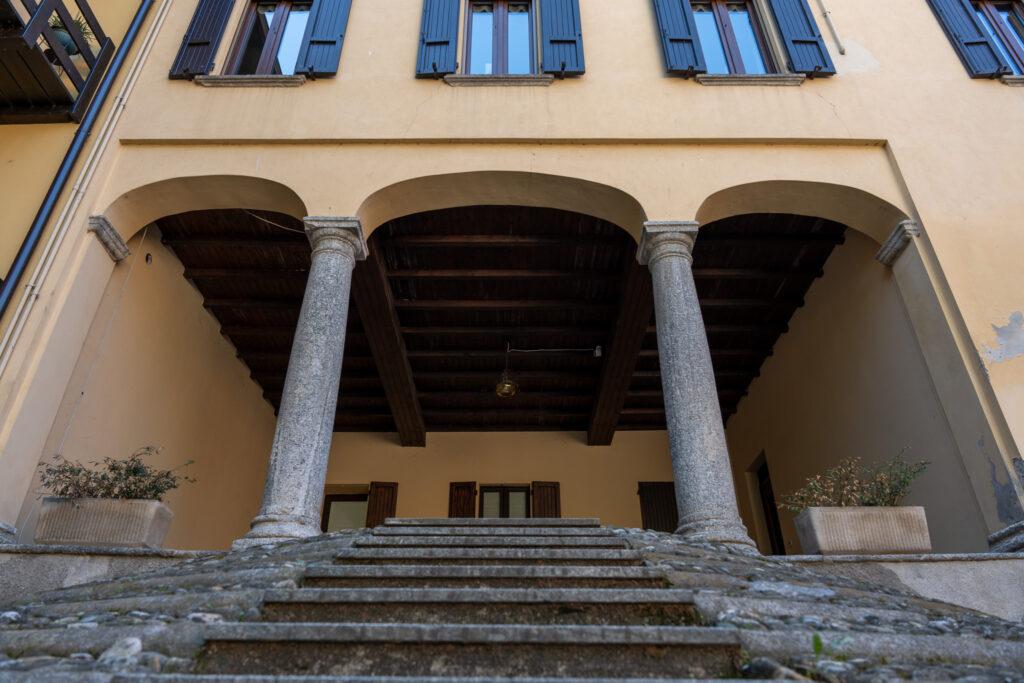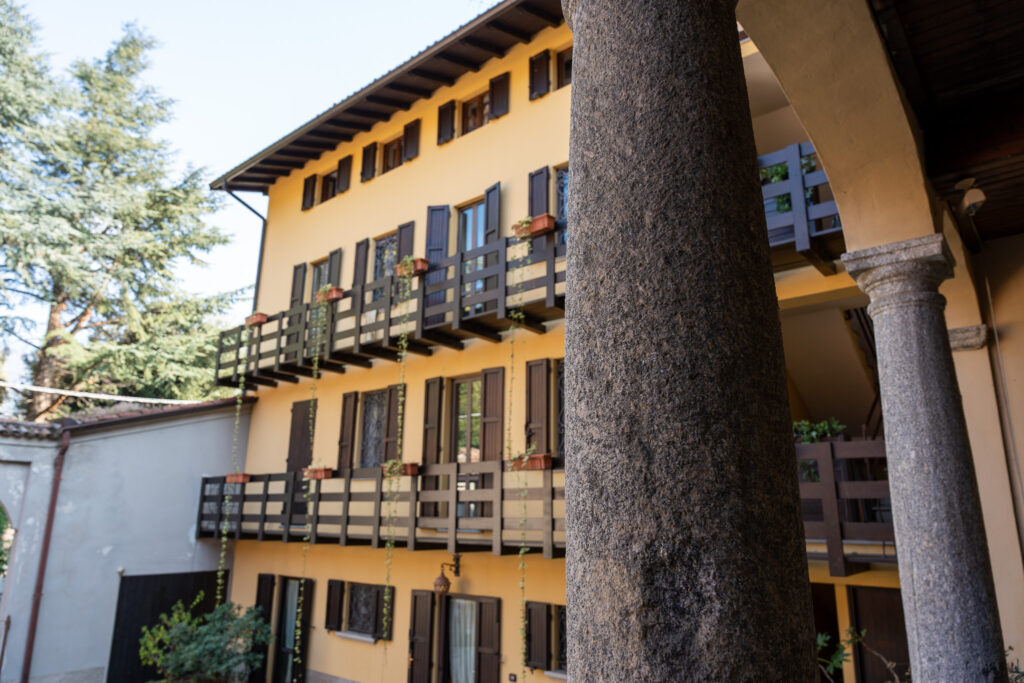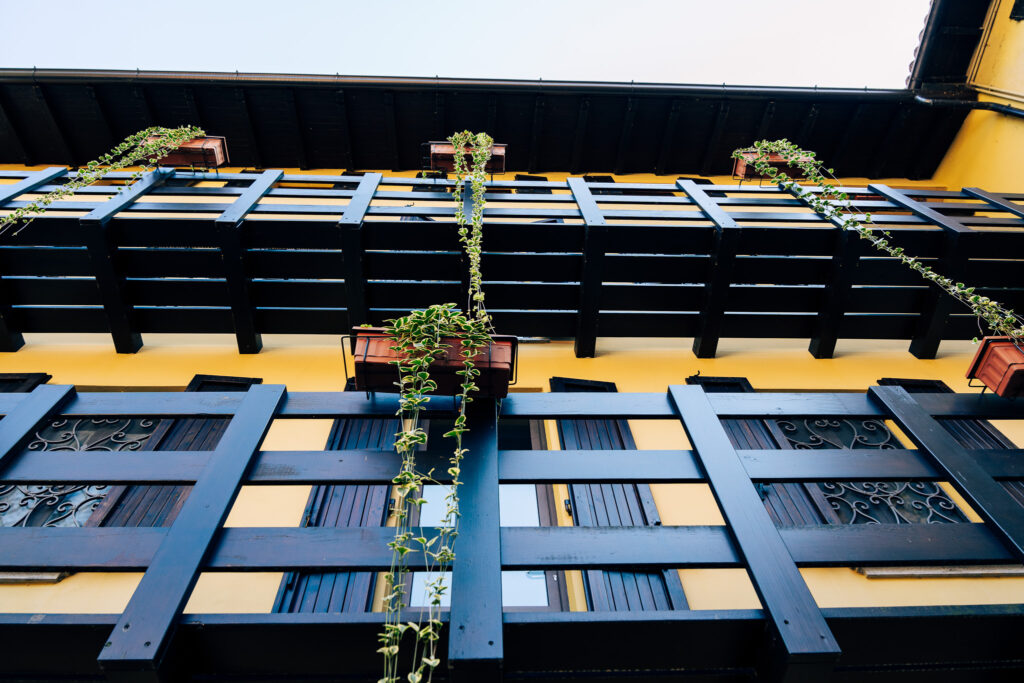Curt de la Maria in Funt
The entrance to the “Curt de la Maria in Funt” features a distinctive exedra layout and its residential complex, called “Cà del Brini”, which includes the adjacent “Curt de Furmaj”, is somewhat detached from the rest of the village.
They are typical farm buildings dating back to the 18th century. The building had and still has two hand-carved granite columns used to support the three arches. Cobblestone steps still lead up to the portico; the central part was cemented over around 1950 by “Gabia de Cìus”, a well-known tradesman. The stairs are made of stone and are very wide: until around 1960, people used to climb up them with bundles of hay to reach the farmstead, located further up. Past the portico lay the entrance to the main hall; on the right, at the end of the stairs, was a corridor that led to the stables.
Nestled under the stairs in this corridor was the family’s bread oven, discovered during renovation works in 1980. The oven, in fact, occupied part of the large kitchen area. The Brini carriage, drawn by a pair of horses, arrived from the street, through the court, up the steps, and into the portico.
Worthy of note are the window shutters crafted from fine wood and the laundry room. Water was drawn from the “funtanén” (in Via Testori, unfortunately closed in 1955, when it was replaced by the aqueduct).
The upper floors consisted of four sizeable rooms that served as bedrooms and for various other purposes.
The Brini family owned much land in Garlate, Chiuso and Maggianico. In the early 19th century, the family relocated to Castello di Lecco while retaining ownership of the estate. Later, the house was inhabited by the Maggi family, whose origins, however, remain somewhat uncertain.
Behind the “Cà de la Maria in funt” lay a field, roughly 100 square metres in size, called the “marunera”. The owner would purchase mulberry seedlings (“murón”) about 30 cm tall and plant them here in the nursery for cultivation. The Court was renovated in the ‘80s.
The “Curt de Furmaj”, on the other hand, seems less grand compared to the adjacent court. The Brinis leased their homes to villagers and were the only family not to ask for sharecropping, which was unusual for the time. The homes were rented in block along with the “löch”, (the fields), a method that minimised disputes between the parties but also involved donating the first fruits of the harvest to the landlord.




